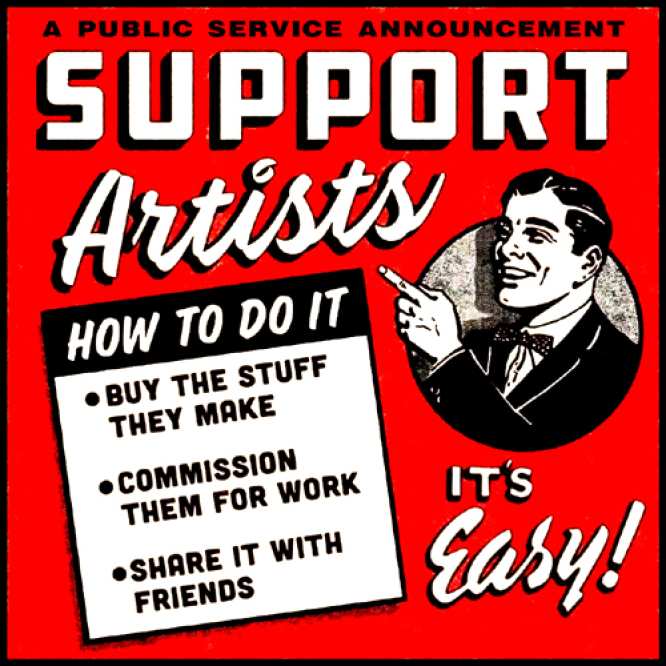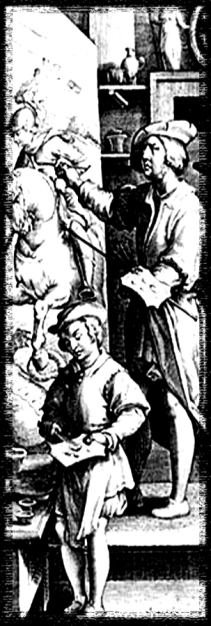TIPS FOR BUYING & COLLECTING ART...
First Steps To Buying Art
Buying art is an art in itself. Here are some practical tips that can help you decide how
to pick the work that's right for you. The right artworks can bring a lifetime of beauty and fulfillment and at the same time be a sound investment.
Whether you're just starting out or you're a seasoned buyer, be cautious and beware. Analyze the art scene. Look around the art market and study the nature of works by
artists who are already established and commanding high prices. Read art reviews and criticisms and know what the experts in the field have to say. As you go along develop your own personal
conviction and taste. With training, your tastes and self-confidence will evolve. Watch for trends and patterns in the marketplace. Research takes precedence over your instincts. "Instinct" in the
art world, as in the stock market, is about as useful as ballet slippers on an alligator. Prepare yourself: look, read, study... visit museums, non-profit art centers--even join and become a
member... Attend art auctions--check your local newspapers ... Talk to other art collectors... Read books on artists and collecting... Subscribe to art magazines and newsletters... Follow various art
critics... Browse art shows, yard sales, and estate sales... Cruise the Internet for online galleries, chat rooms, forums, or news groups... Make friends and contacts on your own--perhaps there is a
local art collectors society.
Buy only art that you like and feel good about... Even if you're thinking of art as an investment (contemporary art does anywhere from losing all its value to about
12.5%), be sure you like what you buy. Can you live with the work in your home every day without getting tired of it? Staring at something that you hate will drive you bats whereas if a piece of art
truly grabs your attention, it will continue to enrich your life forever. And only buy art within your means. Look for contemporary artists releasing new works. You may be on to tomorrow's masters.
The market and the going prices for art are dictated by supply and demand. The fewer the number of high-demand pieces, the more the appreciation. For more expensive pieces, most galleries offer
installment payment plans. Gain knowledge about the demand and prices for the art you collect by visiting galleries and particularly auctions. Find a dealer you trust by visiting many galleries and
asking many questions. If you are intimidated by someone, move on. Sign up for art gallery mailing lists for openings and events.
Determining the artist
Whether the artist is been touted by a gallery or is promoting him or herself (advertisements, etc.), you are still left with the challenge of determining the bottom-line value of the work. Hence, articles, reviews, academic papers, auctions, and art books that feature the artist all contribute toward assessing an artist's worth. When it comes to the actual price, you need to know if the work is priced based on the fact that it is sought after or because it started out at a predetermined published price. This is crucial if you want to resell. It is easy to determine if an artist is taken seriously or not by scholars and art historians or if their publicity machine has created the illusion that their art has value. Simply ask the question: Can I find this artist in an art history book or museum? If the answer is no, should you purchase this type of art? If you like it, absolutely; however, if you are looking for an investment, play it conservatively.
Choosing an artist
When it comes to the artist, evaluations can be made on three levels: (1) fame (celebrity), (2) status (demand), and (3)
value (price). You might want to meet with the artist. Find out what the artist has to say. You'd be surprised how that might influence your decision. Face it: The most important factor in figuring
out the value of art is the law of supply and demand. Art per se has no intrinsic value whatsoever. Hype is part of the value. One thing that doesn't figure into its value is the cost of materials
used and the artist's labor, though many an artist would like to believe otherwise. Demand is driven by an artist's acclaim and achievement.
That includes:
- Education: Though many established artists are self-taught, others have formal training in art colleges and universities. A well-established university tends to attract better students and also tries to open doors for them. An "outsider artist," however, is often just as--if not more--intriguing.
- Grants and Residencies: The verdict will never be in on what exactly grants and fellowships might mean to the value of an artist. While it could be argued that such experiences broaden horizons and perspectives and give the establishment's imprimatur, many rightfully argue that much of this is little more than welfare programs for artists adept at networking or filling out forms rather than actually going out and working for a living.
- Honors and Awards: Juried shows and competitions definitely count for something.
- Reviews & Criticisms: Watch out for reviews and criticisms about the artist in important magazines and journals. Read what the more established critics and reviewers have to say. Look for articles written by the artist. Find out if the artist is listed in reference books.
- Societies and Professional Organizations: Does the artist hold memberships in associations?
- Gallery Representation: Gallery representation or having an art dealer means that the artist has a sales force behind him or her. It does not of necessity indicate quality. Many artists are now working on their own.
- Exhibitions: How many and how often does the artist do exhibitions of new work? It is important to note the exhibitions the artist has participated in over the years. Investing in works of artists who have exhibited in important national and international exhibitions could be beneficial. The venue of such exhibitions, the curator, and the galleries and museums hosting these exhibitions are also important indicators. Most often it is more prestigious to exhibit in solo (one person) shows than in group shows.
- Sales Record: Analyze the sales record of an artist. An artist's prices should not vary from one gallery to the next. The sharp collector tries to buy low, so be on the lookout for emerging artists and catch them early in their careers–no matter how old they are.
WHAT PIECES TO BUY
Decide on a good mix and variety of artwork. You might want to buy works of more established artists as well as emerging ones. It's fun to spot emerging talents and buy when their works are relatively cheap. Your curiosity will guide you into a world you might find quite rewarding. Pick subject matter and media that appeals to you. You might want to keep it varied or you might want to specialize. The work of the artist is of course what you are most interested in. Ideally, an artist evolves a distinct style and language, instead of merely copying other styles and trends. Some other thoughts to ponder:
- Is the work of good quality? Assessing the quality of artwork can be subtle and difficult. Consider the use of materials. If art is for investment it must be able to last. Good materials, techniques, and treatment should have been used while creating the artwork. Likewise
- Do you have a firm understanding of the artist's purpose and technique? This will be crucial if you want to be certain that you are not a victim of overheated sales hype.
- Is the work in its original condition? Value can decrease depending on the extent and quality of restoration.
- Is the art authentic? Value can decrease if there is any doubt about its provenance or authenticity.



